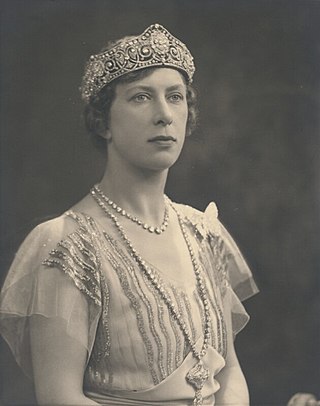
Mary, Princess Royal, was a member of the British royal family. She was the only daughter of King George V and Queen Mary, the sister of Kings Edward VIII and George VI, and aunt of Elizabeth II. In the First World War, she performed charity work in support of servicemen and their families. She married Henry Lascelles, Viscount Lascelles, in 1922. Mary was given the title of Princess Royal in 1932. During the Second World War, she was Controller Commandant of the Auxiliary Territorial Service. The Princess Royal and the Earl of Harewood had two sons, George Lascelles, 7th Earl of Harewood, and The Honourable Gerald Lascelles.
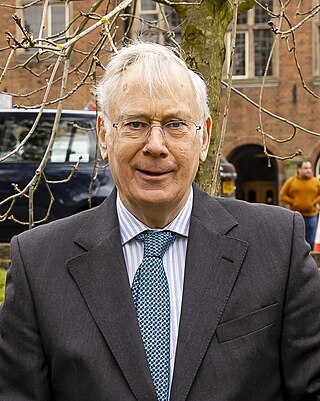
Prince Richard, Duke of Gloucester, is a member of the British royal family. He is the second son of Prince Henry, Duke of Gloucester, and Princess Alice, Duchess of Gloucester, and the youngest of the nine grandchildren of King George V and Queen Mary. He is 31st in the line of succession to the British throne, and the highest person on the list who is not a descendant of George VI, who was his uncle. At the time of his birth, he was 5th in line to the throne.

Princess Alice, Duchess of Gloucester, was a member of the British royal family. She was the wife of Prince Henry, Duke of Gloucester, the third son of King George V and Queen Mary. She was the mother of Prince William of Gloucester and Prince Richard, Duke of Gloucester.
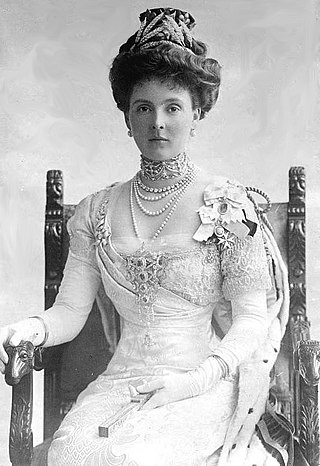
Princess Alice, Countess of Athlone was a member of the British royal family. She was one of the longest-lived British royals. Princess Alice was the chatelaine of Rideau Hall in Ottawa from 1940 until 1946, while her husband Alexander Cambridge, 1st Earl of Athlone, served as Governor General of Canada.

Clarence House is a royal residence on The Mall in the City of Westminster, London. It was built in 1825–1827, adjacent to St James's Palace, for the royal duke of Clarence, the future king William IV.

The use of the title of Princess of the United Kingdom of Great Britain and Northern Ireland is entirely at the will of the sovereign, and is now expressed in letters patent. Individuals holding the title of princess are styled "Her Royal Highness" (HRH). The current letters patent were issued in 1917 during the First World War, with one extension in 2012.
A royal family order is a decoration conferred by the head of a royal family to their female relations. Such an order is considered more of a personal memento than a state decoration, although it may be worn during official state occasions.

The Royal Order of Victoria and Albert is a British Royal Family Order instituted on 10 February 1862 by Queen Victoria, and enlarged on 10 October 1864, 15 November 1865, and 15 March 1880. No award has been made since the death of Queen Victoria.
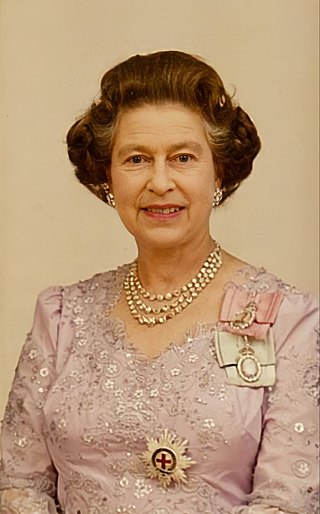
The Royal Family Order of George V is an honour that was bestowed on female members of the British royal family by King George V.

The Royal Family Order of George VI is an honour that was bestowed on female members of the British royal family by King George VI.

The Royal Family Order of George IV is an honour that was bestowed as a mark of personal esteem on female members of the British royal family by King George IV. It was the first Royal Family Order issued in the United Kingdom. Prior to George IV's accession in 1820, both ladies and gentlemen of the Court, as well as female members of the royal family, had worn the Sovereign's portrait set in a jewelled frame. George IV formalised the order.

Queen Elizabeth II owned a historic collection of jewels – some as monarch and others as a private individual. They are separate from the gems and jewels of the Royal Collection, and from the coronation and state regalia that make up the Crown Jewels.

The wedding of Princess Elizabeth and Sir Philip Mountbatten took place on Thursday 20 November 1947 at Westminster Abbey in London, United Kingdom. The bride was the elder daughter of King George VI and Queen Elizabeth as well as the heir presumptive to the British throne. The groom was born a Greek and Danish prince; he stopped using these foreign titles on his adoption of British nationality four months before the announcement of their marriage and was made Duke of Edinburgh, Earl of Merioneth and Baron Greenwich on the morning of the wedding.

The wedding of Prince Edward and Sophie Rhys-Jones took place on 19 June 1999 in St George's Chapel at Windsor Castle. Queen Elizabeth II's youngest child, Prince Edward, was created Earl of Wessex hours before the ceremony.
Hugo Ralph Vickers DL is an English writer and broadcaster.
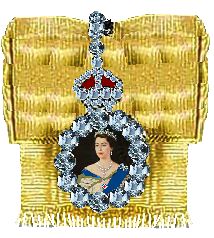
The sovereign of the United Kingdom may award a royal family order to female members of the British royal family, as they typically do not wear the commemorative medals that men do. The order is a personal memento rather than a state decoration. The same practice is in place in the royal families of Norway, Sweden, Denmark, the Netherlands, Thailand, and Tonga.

Duchess of Edinburgh is the principal courtesy title held by the wife of the Duke of Edinburgh. There have been five Duchesses of Edinburgh since the title's creation. Following the accession of Charles III in 2022, the 3rd creation of the Dukedom of Edinburgh merged in the Crown. Following his parents’ wishes, on 10 March 2023, Charles III conferred the title Duke of Edinburgh to his youngest brother, Prince Edward, and his wife, Sophie, became the Duchess of Edinburgh.

The wedding of Prince Henry, Duke of Gloucester, and Lady Alice Montagu Douglas Scott took place on Wednesday, 6 November 1935, in the private chapel at Buckingham Palace. A larger public ceremony had been planned for Westminster Abbey, but plans were scaled back after the bride's father, the 7th Duke of Buccleuch, died of cancer on 19 October.

The third season of The Crown follows the life and reign of Queen Elizabeth II. It consists of ten episodes and was released by Netflix on 17 November 2019.
























